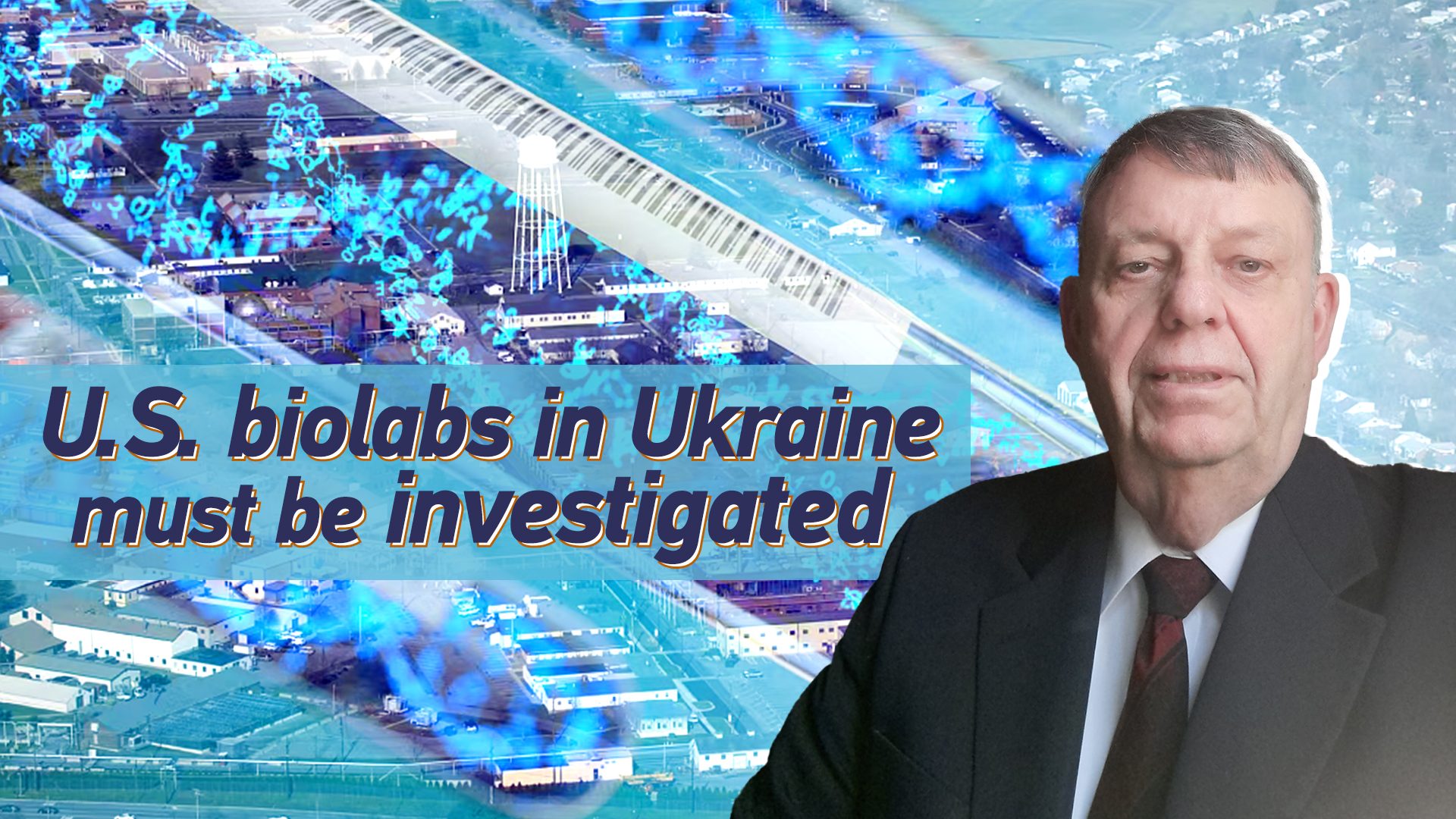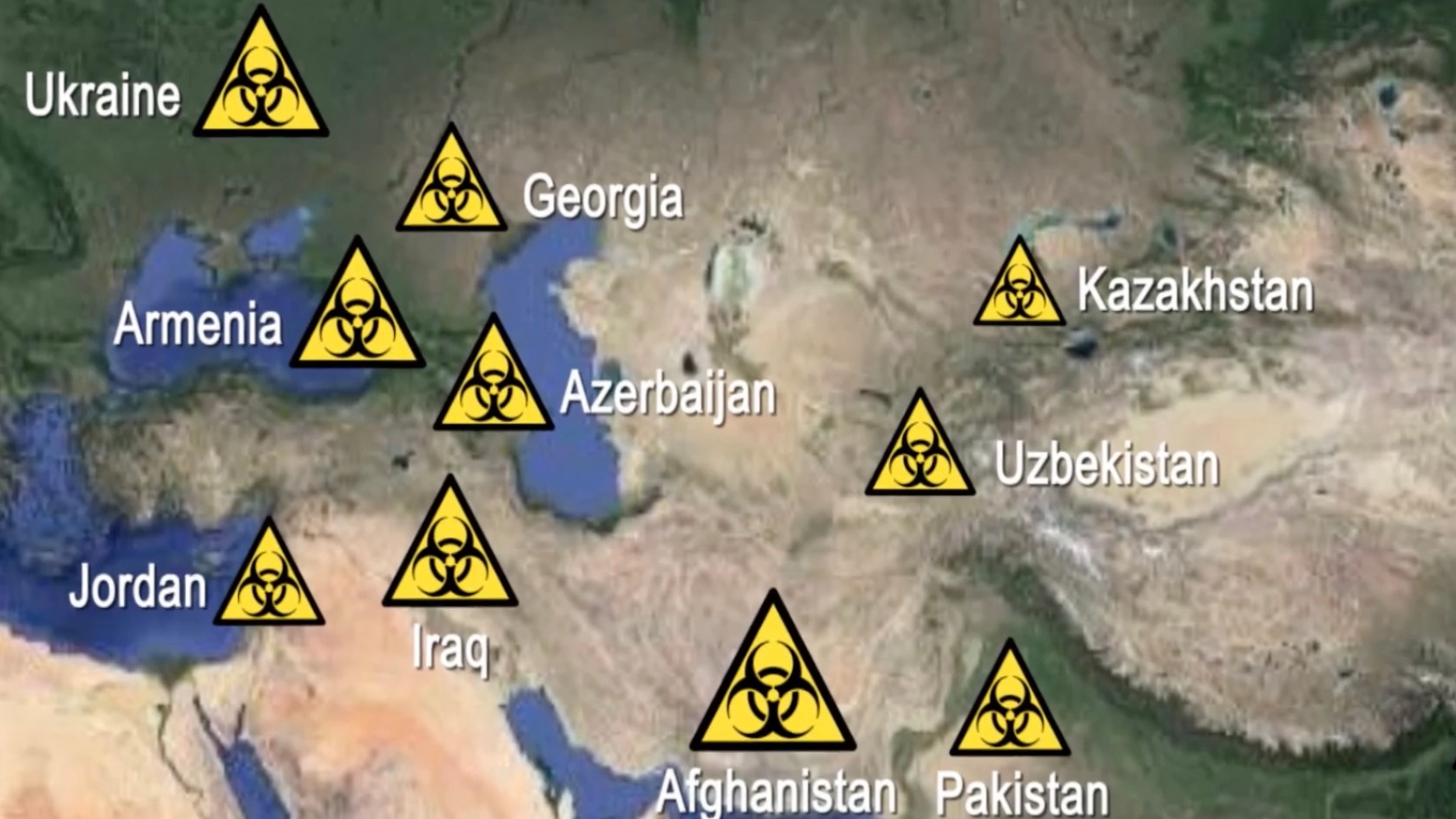04:41

Editor's note: William Jones is a former White House correspondent for Executive Intelligence Review and a non-resident fellow of the Chongyang Institute for Financial Studies, Renmin University of China. The article reflects the author's opinions, and not necessarily those of CGTN.
The Biological Weapons Convention (BWC), which entered into force in 1975, was an attempt to eliminate the possibility of the use of biological warfare in any conflict between nations. The use of chemical warfare by the Germans in the First World War had so repulsed the world that there was a general push in the United Nations to ban chemical and biological weapons from warfare altogether which was accomplished in the Geneva Protocol of 1925. Nevertheless, the Japanese during World War II continued to work on a bioweapons project in their notorious Unit 731 in occupied China.
During the Cold War, both the U.S. and the Soviet Union were working on developing biological weapons. Concerns over this led to a renewed attempt in 1972 to put a stop to biological warfare development by means of a Biological Weapons Convention. While this remained a principled agreement among the parties, there was never developed a means of verifying that such an agreement was in fact being kept by the parties.
In 1994, the parties to the BWC began to discuss the possibility of verification, including the inspection of sites that were possibly of a dual-use nature, like using pathogens for purposes of developing a vaccine or for biodefense purposes. While the U.S. would not object to inspecting the facilities of other countries, they were averse to having foreign inspectors coming to U.S. facilities. In 2001, the George Bush Administration advised that a search for a verification system be terminated.
With the break-up of the Soviet Union and the spread of nuclear and biological weapons facilities over four countries, there was the possibility that these could represent a clear danger in the chaotic political situation existing in all of these countries. The 1991 Soviet Threat Reduction Act, popularly known as the Nunn-Lugar program, was meant to consolidate nuclear weapons in a limited number of safe sites, guarantee the security of these weapons, and provide alternative employment for the Soviet scientists involved in these programs.
Later, in 2005, an agreement was signed with Ukraine under the Nunn-Lugar program, to use U.S. funds to improve security for pathogens stored at biological research and health facilities in this former Soviet republic, some of which were once linked to the Soviet-era anti-plague network, and which continued to store libraries of naturally occurring pathogens for research and public health. The agreement includes provisions for cooperation between U.S. and Ukrainian epidemiological laboratories in diagnosing disease outbreaks.

Graphic shows location of some U.S.-funded overseas biolabs. /CGTN
Graphic shows location of some U.S.-funded overseas biolabs. /CGTN
On the surface, this has seemed like a reasonable arrangement, beneficial to the two countries as well as to the rest of the world. This ignores, however, the strategic role of Ukraine in U.S. political thinking at the time. From the time of its independence in 1991, Ukraine has been a clear target of U.S. interest as a bulwark against a revived Russia. The roots of this policy go all the way back to the end of World War II when the U.S. took over the fascist networks of Nazi General Reinhard Gehlen, including a considerable Ukrainian section, in their war of insurgency against the Soviet Union.
The world's attention was focused on the extensive network of biolabs operating under this Pentagon program when Russian troops entered Ukraine and occupied some of these labs. As the Russians approached the labs, they had been quickly cleaned out of any experiments by their occupants, who then fled, but extensive paperwork at the labs and other evidence released by the Russian Ministry of Defense indicated that some very questionable experiments were being conducted. While the Russian concerns were initially rejected as "propaganda" by the Western media, U.S. Undersecretary of State for Political Affairs Victoria Nuland admitted in March 2022 that "Ukraine has biological research facilities."
The issue could not be totally swept under the rug. China has called for an investigation of the matter. China's Permanent Representative to the UN, Zhang Jun, has called on the U.S. to respond to these claims and make timely and comprehensive clarifications to dispel doubts about the programs–if possible. More importantly, China is also calling for a verification clause to the BWC to assure that all countries are living up to their commitments. The U.S. cannot be excluded from this. One cannot simply take the word of officials in this matter. The duplicity of the U.S. in starting wars based on lies has reduced the credibility of the U.S. in the eyes of the international community.
In addition, former CIA Director Mike Pompeo's comment that the CIA reserves the right to "lie, cheat, and steal" made clear to the world that the U.S. reserves the right to hide the truth. Without a verification mechanism, no one can be sure that the Pentagon, in its ongoing crusade against Russia, is not using labs in Ukraine for nefarious. In this instance, we should remember former U.S. President Ronald Reagan's principle concerning nuclear agreements: "Trust but verify."
(If you want to contribute and have specific expertise, please contact us at opinions@cgtn.com. Follow @thouse_opinions on Twitter to discover the latest commentaries in the CGTN Opinion Section.)